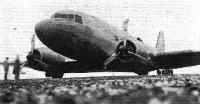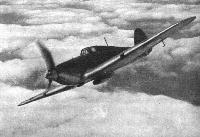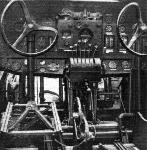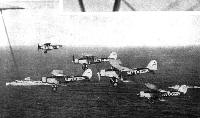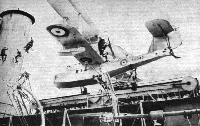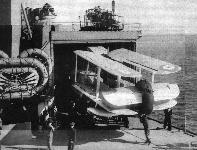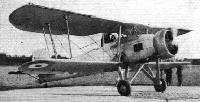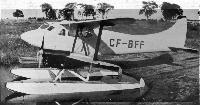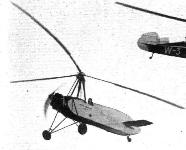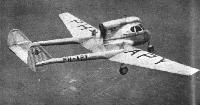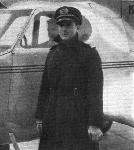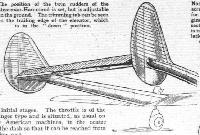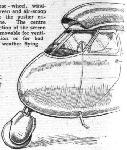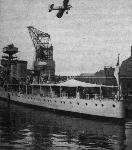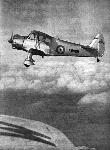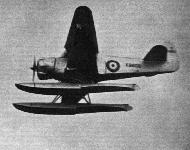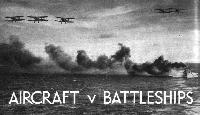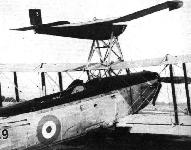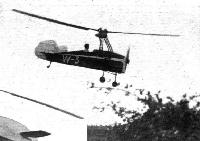Фотографии
-
Some of the airmen of No. 10 B.S. Warrant Officer A. C. Townsend, sitting in the centre of the front row, wears an observer's wing on his tunic
Самолёты на фотографии: Armstrong Whitworth Whitley / A.W.38 - Великобритания - 1936
-
Another view of the echelon, taken from in front. This formation is less difficult in twin-engined aircraft than in single-engined types, where the pilot seldom has such a good view forward and down.
Самолёты на фотографии: Armstrong Whitworth Whitley / A.W.38 - Великобритания - 1936
-
Самолёты на фотографии: Armstrong Whitworth Whitley / A.W.38 - Великобритания - 1936
-
An echelon of four Whitleys. Note the almost-retracted wheels.
Самолёты на фотографии: Armstrong Whitworth Whitley / A.W.38 - Великобритания - 1936
-
An impressive line-up of some of the Whitleys of No. 10 B.S. on Dishforth Aerodrome.
Самолёты на фотографии: Armstrong Whitworth Whitley / A.W.38 - Великобритания - 1936
-
The pilots, officers and airmen, of No. 10 (B) Squadron: Wing Comdr. S. Graham, M.C., the CO., has his hands crossed in front. On either side are his two flight commanders, Sqn. Ldr. T. S. Horry, D.F.C., A.F.C., on his right, and Sqn. Ldr. E. B. Steedman on his left.
Самолёты на фотографии: Armstrong Whitworth Whitley / A.W.38 - Великобритания - 1936
-
Corrugated Alclad sheet is used in the construction of the A. W. Whitley spar box. The front and rear corners are covered with channel-section strips, as shown.
Самолёты на фотографии: Armstrong Whitworth Whitley / A.W.38 - Великобритания - 1936
-
GERMANY'S LANDPLANE RECORD: Dr. Wurster, the German test pilot, who flew what seems to be a modified B.F.W. Me. 109 single-seater fighter at 611-004 km./hr. (379.66 m.p.h.) thus breaking the world's landplane speed record of 567.115 km./hr. (352.38 m.p.h.) held by Howard Hughes.
Самолёты на фотографии: Messerschmitt Bf.109 / Bf.109B / Bf.109C / Bf.109D - Германия - 1935
-
The cut-away drawing of the Bristol Blenheim medium bomber reveals not only the comprehensive equipment but the power plants (Mercury VIIIs).
Самолёты на фотографии: Bristol Blenheim - Великобритания - 1936
-
ESCORT: A flight of Fiat CR32 single-seater fighters conducts Romeo reconnaissance machines (nearer the camera) into Spanish Government territory. Note the cross adopted as the standard Insurgent marking.
Самолёты на фотографии: FIAT CR.30 / CR.32 Chirri - Италия - 1932
-
PROTECTIVE PULSATIONS: Installing the latest Goodrich de-icing equipment on the leading edge of a T.W.A. Douglas. It is arranged so that pulsations of air through rubber tubing under the rubber covering break off the ice as soon as it forms. The device is controlled by a master valve and pressure is obtained from the engine exhaust. The pulsations raise the covering about half an inch.
Самолёты на фотографии: Douglas DC-3 / C-47 Skytrain/С-53 Skytrooper / Dakota - США - 1935
-
COINCIDENCE: In view of the comments on this page on emergency landings on one wheel, particular interest attaches to this telegraphed picture from the States, showing an American Airlines Douglas, with seven passengers on board, about to be safely landed with one wheel jammed in the "up" position. Like the R.A.F. Sergeant Pilot at Tangmere, the D.C.3 pilot circled the aerodrome for 70 minutes before coming in.
Самолёты на фотографии: Douglas DC-3 / C-47 Skytrain/С-53 Skytrooper / Dakota - США - 1935
-
VENTRE A TERRE: A Douglas DC3 with a temperamental undercarriage after being set down at Newark Airport at the expense of bent airscrews. The wheels of the Douglas normally protrude partly below the nacelles when the undercarriage is raised.
Самолёты на фотографии: Douglas DC-3 / C-47 Skytrain/С-53 Skytrooper / Dakota - США - 1935
-
Регистрационный номер: NR1277 [2] The Curtiss Hawk 75 single-seater can be equipped to carry quite a formidable bomb load
Самолёты на фотографии: Curtiss Hawk 75 / P-36 / Mohawk - США - 1935
-
Регистрационный номер: NR1277 [2] The Curtiss Hawk 75 single-seater can be equipped to carry quite a formidable bomb load, half of which is seen in the photograph. The bombs are of the fragmentation variety.
Самолёты на фотографии: Curtiss Hawk 75 / P-36 / Mohawk - США - 1935
-
Регистрационный номер: K4240 [2] The prototype Handley Page Hampden medium bomber.
Самолёты на фотографии: Handley Page Hampden / H.P.52 - Великобритания - 1936
-
Регистрационный номер: K4240 [2] Pegasus XX engines were specified for the Handley Page Hampden prototype shown here. An improved version is in production with Napier E.108s.
Самолёты на фотографии: Handley Page Hampden / H.P.52 - Великобритания - 1936
-
Регистрационный номер: K5083 Capable of over 300 m.p.h., the Hawker Hurricane single-seater day-and-night fighter is fitted with the Rolls Royce Merlin II engine. The formation of the radiator housing is interesting.
Самолёты на фотографии: Hawker Hurricane - Великобритания - 1935
-
Регистрационный номер: K5054 The classical beauty of the exceptionally fast Merlin-powered Supermarine Spitfire single-seater fighter is revealed to great advantage in this view. Note the ducted radiators beneath the wing.
Самолёты на фотографии: Supermarine Spitfire - Великобритания - 1936
-
The best-known previous experiment: A Bristol Scout which took off from the big Porte "Baby" flying boat at Felixstowe during the War.
Самолёты на фотографии: Bristol Scout - Великобритания - 1914Porte Baby - Великобритания - 1916
-
The complexity of the Fairey Battle's equipment is indicated in the Flight copyright drawing.
Самолёты на фотографии: Fairey Battle - Великобритания - 1936
-
Stringers are not used in the fuselage of the Fairey Battle, their place being taken by the curled-over edges of the planking.
Самолёты на фотографии: Fairey Battle - Великобритания - 1936
-
Регистрационный номер: G-ADHK The lower component of the Composite supports the upper on a trestle which incorporates the hook release gear.
Самолёты на фотографии: Short Mayo Composite (S.20 Mercury and S.21 Maia) - Великобритания - 1938
-
Регистрационный номер: K6127 Completely slotted and flapped, the Westland Lysander army co-operation monoplane (Mercury XII or Perseus VIII engine), is in large-scale production for R.A.F. units.
Самолёты на фотографии: Westland Lysander - Великобритания - 1936
-
With its trailing edge flaps, Gipsy Major engine and sturdy construction, the Miles Magister will be a welcome addition to the ranks of Service trainers.
Самолёты на фотографии: Miles Magister / M.14 - Великобритания - 1937
-
"Doughboys" scurry away as a Northrop attack machine simulates the laying of a lethal trail during manoeuvres. A defensive Boeing P.26A fighter is worrying the attacker, but must be at a great disadvantage over home ground.
Самолёты на фотографии: Boeing P-26 Peashooter - США - 1932Northrop A-17 / 8A Nomad - США - 1934
-
Sir Samuel Instone beside one of the Vickers Vimy Commercial biplanes used by Instone Air Lines.
Самолёты на фотографии: Vickers Vimy Commercial - Великобритания - 1919
-
The Armstrong Whitworth Ensign - the first of a large order for Imperial Airways - comes out for an engine run.
Самолёты на фотографии: Armstrong Whitworth Ensign / A.W.27 - Великобритания - 1938
-
SNIFFING THE BREEZE: The first of the eagerly awaited Armstrong Whitworths of the Ensign class appeared outside the Hamble works last week-end in an almost finished condition. Twelve of these huge 42-seaters, of 123ft. span, were ordered by Imperial Airways. Four 800 h.p. fourteen-cylinder Tiger IX radials supply the power to lift more than 20 to <...> weight.
Самолёты на фотографии: Armstrong Whitworth Ensign / A.W.27 - Великобритания - 1938
-
FULL-SIZED: Some idea of the size of the A.W. Ensign and, in particular, of the retractable undercarriage legs and wheels, may be gathered from this Flight photograph.
Самолёты на фотографии: Armstrong Whitworth Ensign / A.W.27 - Великобритания - 1938
-
STANDARD LAYOUT: The control cabin of the A.W. Ensign, showing how the general instrument layout is similar to that of the Empire boat. Pilots, after all, may on occasion be expected to make a change-over. The tandem-placed wheels in the centre foreground are for adjustment of the fore-and-aft and directional trimming tabs.
Самолёты на фотографии: Armstrong Whitworth Ensign / A.W.27 - Великобритания - 1938
-
The mechanism used for dropping and picking up the fighters carried by the American airship Macon. These photographs were taken during the initial experiments with a trainer.
Самолёты на фотографии: Fleet Model 1 / 2 / 7 Fawn - Канада - 1928
-
But one outstanding characteristic of the De Havilland Don comprehensive trainer is the cooling system of the Gipsyking engine.
Самолёты на фотографии: De Havilland Don / D.H.93 - Великобритания - 1937
-
Регистрационный номер: K5115 The Hawker Henley light bomber (Specification P.4/34) is powered with the Rolls-Royce Merlin II and carries its main bomb load in ventral compartments. Additional bombs may be attached outboard.
Самолёты на фотографии: Hawker Henley - Великобритания - 1937
-
A Dornier Do.17 medium bomber of the German Air Force. Powered with two Mercedes inverted vee-twelves, the Do.17 is said to be faster than a Blenheim. It has a gun position behind the pilot's cockpit.
Самолёты на фотографии: Dornier Do.17 - Германия - 1934
-
A Flight photograph of one of the four-gun Gloster Gladiators as supplied to Finland.
Самолёты на фотографии: Gloster Gladiator - Великобритания - 1934
-
Регистрационный номер: K7726 A POTENTIAL CHAMPION: A Vickers Wellesley medium bomber (Pegasus XX) complete with streamline bomb-carriers below its wings. It is possible that a specially prepared Wellesley may try for the world's long-distance record.
Самолёты на фотографии: Vickers Wellesley - Великобритания - 1935
-
Регистрационный номер: K4049 The Pegasus-powered Vickers Wellington I prototype. Production versions of this extremely efficient medium bomber are likely to differ in certain respects.
Самолёты на фотографии: Vickers Wellington / Type 271 - Великобритания - 1936
-
DIESEL-POWERED BOMBERS: Junkers Ju.86 bombers of the German Air Force. These machines are essentially similar to the civil "86" and are fitted with a pair of Junkers Jumo 205 diesel engines of 510/600 h.p. A peculiar retractable "dustbin" turret below the fuselage is a characteristic feature.
Самолёты на фотографии: Junkers Ju.86 - Германия - 1934
-
The Italian Breda 88 multi-seater fighter or bomber which averaged 358.72 m.p.h. over 62.14 miles and 295.46 m.p.h. over 621.4 miles
Самолёты на фотографии: Breda Ba.88 Lince - Италия - 1936
-
The Cierva "jump-start" Autogiro has a Siddeley Genet Major engine and incorporates the "autodynamic" rotor head by which the rotor blades automatically go into fine pitch for speeding-up and into coarse pitch for the jump start. A new version is appearing.
Самолёты на фотографии: Cierva/Avro C.30A / Rota - Великобритания - 1932
-
Vought Corsair single-float reconnaissance machines (which may also be used as light bombers) on the stern of U.S.S. California, flagship of the U.S. Battle Force, other units of which are seen astern.
Самолёты на фотографии: Vought O2U/O3U/V-65/V-93 Corsair - США - 1926
-
Blackburn Shark torpedo spotter reconnaissance machines of the Fleet Air Arm with a Blackburn Baffin torpedo bomber beyond.
Самолёты на фотографии: Blackburn Baffin / B-5 - Великобритания - 1933Blackburn Shark / B-6 - Великобритания - 1933
-
Регистрационный номер: K8575 The Seafox light reconnaissance seaplane with 16-cylinder Rapier engine. The type is in service with the Fleet Air Arm.
Самолёты на фотографии: Fairey Seafox - Великобритания - 1936
-
The Short Singapore III, with four medium supercharged Kestrels, is doing excellent service in home waters and overseas.
Самолёты на фотографии: Short Singapore III / S.19 - Великобритания - 1934
-
The sturdy Supermarine Walrus is extensively used from naval craft, being designed for catapulting. The engine is a Pegasus VI.
Самолёты на фотографии: Supermarine Walrus/Seagull V - Великобритания - 1933
-
Регистрационный номер: L2180 "Уолрэс" I закатывают в ангар на крейсере "Шеффилд"
A Supermarine Walrus amphibian - one of two such machines carried on H.M.S. Sheffield - being tucked away in one of the special hangars. The mass of mechanism on the roof is a multiple pom-pom.Самолёты на фотографии: Supermarine Walrus/Seagull V - Великобритания - 1933
-
Both intended for similar duties (bombing, reconnaissance and patrol), operating from comparatively sheltered waters, the Amiot and Fokker T.4 (photo) twin-float seaplanes are worth comparing. The Fokker, of course, is the older design.
Самолёты на фотографии: Fokker T.IV - Нидерланды - 1927
-
Регистрационный номер: NC16910 FAMILY AMPHIBIAN: Used by several wealthy owners in the States as a family conveyance and as a means of travelling up to business in New York, the Grumman amphibian is a machine with a very definite place in the American market. With two Wasp Juniors the cruising speed (on 75 per cent power at 9,600 ft.) is 193 m.p.h. and the full-load ceiling on one engine is given as 14,000ft. Not bad for an amphibian. There is now a seaplane "season" in the States and the Grumman makes the best of both elements.
Самолёты на фотографии: Grumman G-21/JRF/OA-9/OA-13 Goose - США - 1937
-
DEMONS DOWN UNDER: Permanent personnel of the Royal Australian Air Force in training at Laverton aerodrome. Their headgear is worthy of note. The aircraft nearest the camera are Hawker Demons (R. R. Kestrel V) which, as supplied to Australia, are really general purpose machines with fully supercharged engines. A pair of Ansons may be descried farther down the tarmac, together with additional Demons.
Самолёты на фотографии: Avro Anson / Type 652 - Великобритания - 1935Hawker Demon - Великобритания - 1932
-
Used by the R.A.F. for general reconnaissance and advanced training duties, the Avro Anson, a Swedish (Finnish ???) version of which is seen in action
Самолёты на фотографии: Avro Anson / Type 652 - Великобритания - 1935
-
Регистрационный номер: K5178 The Blackburn Skua dive-bomber fleet fighter is the first monoplane to go into quantity production for the Fleet Air Arm. It is designed for a sleeve-valve Perseus.
Самолёты на фотографии: Blackburn Skua / B-24 - Великобритания - 1937
-
The Swordfish torpedo spotter reconnaissance machine (Pegasus III or X). The type is in service with the Fleet Air Arm.
Самолёты на фотографии: Fairey Swordfish - Великобритания - 1934
-
Регистрационный номер: OH-BLA The D.H. Rapide Salama used by Aero O/Y in their internal airline experiments. The picture was taken on Helsinski aerodrome.
Самолёты на фотографии: De Havilland Dragon Rapide / Dominie / D.H.89 - Великобритания - 1934
-
ON HIS MAJESTY'S SERVICE: The Air Council's Airspeed Envoy, used by members of the Royal Family, framed by the forepart of a Handley Page Harrow heavy bomber.
Самолёты на фотографии: Airspeed Envoy / AS.6 - Великобритания - 1934Handley Page Harrow / H.P.54 - Великобритания - 1936
-
The Belgian Renard R.36, which has an unusual wing formation and a ventral radiator, for its Hispano "Y" engine.
Самолёты на фотографии: Renard R.36 / R.37 - Бельгия - 1937
-
The Tipsy two-seater which is now in production at Hanworth. It is, of course, a natural development of the single-seater Tipsy and is intended as an economical trainer or tourer.
Самолёты на фотографии: Tipsy B / BC - Бельгия - 1937
-
The Arpin monoplane, which is now in course of construction, is a pusher with a tricycle undercarriage. Other features of interest will be gathered from a study of these general arrangement drawings.
Самолёты на фотографии: Arpin A-1 - Великобритания - 1938
-
The Lynx-engined Avro Tutor trainer is seen here as a single-seater specially equipped for inverted flying. It is normally a dual-control two-seater.
Самолёты на фотографии: Avro Tutor/Sea Tutor/Prefect / Type 621/646/626 - Великобритания - 1929
-
Регистрационный номер: G-AESZ Possessed of a remarkably good performance for a machine with only 32 h.p., the single-seater Chilton monoplane has now been flying quite successfully for several months.
Самолёты на фотографии: Chilton D.W.1 - Великобритания - 1937
-
Регистрационный номер: L6923 The R.A.F. is but one of many military air services employing the versatile De Havilland Tiger Moth trainer. The engine is the Gipsy Major.
DE HAVILLAND TIGER MOTH: Trainer (Gipsy Major engine - 130 h.p. at sea level); span, 29ft. 4in.; gross weight, 1,825 lb.; max. speed, 109 m.p.h.Самолёты на фотографии: De Havilland Tiger Moth / D.H.82 - Великобритания - 1931
-
Регистрационный номер: G-AEJM The D.H.86B is fitted with four Gipsy Six engines of 200 h.p. each.
Самолёты на фотографии: De Havilland Express Air Liner / D.H.86 - Великобритания - 1934
-
Регистрационный номер: CF-BFF The D.H. "Dragonfly" Seaplane (two 130 h.p. D.H. "Gipsy-Major" engines).
Suitable either as a luxury private owner's machine or as a transport trainer, the D.H. Dragonfly has been fitted with floats for work in Canada.Самолёты на фотографии: De Havilland Dragonfly / D.H.90 - Великобритания - 1935
-
FULL DUAL: Three specially equipped D.H. Dragonfly trainers for Roumania have recently been completed at Hatfield. The machines are specially interesting in that, apart from the Standard two-way and D.F. radio equipment (right), they are fitted with fully duplicated and very completely equipped blind-flying panels (left). In fact, the only instrument not to be found on each panel is the homing indicator; the duplicate in this case is naturally with the radio equipment.
Самолёты на фотографии: De Havilland Dragonfly / D.H.90 - Великобритания - 1935
-
Регистрационный номер: G-AEVV [2] Самолёты на фотографии: De Havilland Albatross / D.H.91 - Великобритания - 1937
-
Регистрационный номер: G-AEVV [2] The first of the De Havilland Albatross inter-continental air liners on a test flight above the clouds.
Самолёты на фотографии: De Havilland Albatross / D.H.91 - Великобритания - 1937
-
The Monospar Universal is, as its name implies, intended as a convertible type for a number of uses. The cabin may be seen in ambulance and freighter form in the pictures; normally there are four chairs, and the machine can be considered either as a luxury private-owner type or as a feeder-line proposition.
Самолёты на фотографии: General Aircraft Monospar ST-25 Universal - Великобритания - 1935
-
One of our own experiments in this tricycle business - the Monospar. It is, on conventional unconventional lines, for application to pushers and multi-engined types.
Самолёты на фотографии: General Aircraft Monospar ST-25 Universal - Великобритания - 1935
-
Регистрационный номер: K5604 The Flight photograph of the newest British single-seater multi-gun fighter - the Gloster F.5/34 with Bristol Mercury engine.
The shapely Gloster F.5/34 is characterised by an unusual tail in which the fin and rudder are placed well forward.Самолёты на фотографии: Gloster F.5/34 - Великобритания - 1937
-
Регистрационный номер: G-ADMV The Hafner Gyroplane has a 90 h.p. Pobjoy Niagara engine and differs from the other two in that the rotor head does not tilt. Instead there is a control for altering the angle of incidence of the rotor blades. Work on Herr Hafner's 1938 model will shortly begin.
Самолёты на фотографии: Hafner AR.III Gyroplane - Великобритания - 1935
-
Регистрационный номер: A1-3 A flight of Australian Demons, incidentally, is seen making a diving attack.
Самолёты на фотографии: Hawker Demon - Великобритания - 1932
-
Регистрационный номер: J9933 The Nash and Thompson gun turret fitted to a Hawker Demon, with Flight's representative demonstrating firing over the side.
Самолёты на фотографии: Hawker Demon - Великобритания - 1932
-
Регистрационный номер: G-AESV The v.p. airscrew version of the five-seater Heston Phoenix which is one of the quietest single-engined machines on the market.
Самолёты на фотографии: Heston Phoenix - Великобритания - 1935
-
Регистрационный номер: G-ADYX A high-efficiency ultra-lightweight pusher - the Luton Buzzard
Самолёты на фотографии: Luton Buzzard - Великобритания - 1936
-
The Percival Vega Gull has been obtainable for some time with a Series II engine and v.p. airscrew, increasing the cruising speed and the permissible all-up weight while reducing the normal take-off run
Самолёты на фотографии: Percival Vega Gull / K.1 - Великобритания - 1935
-
Регистрационный номер: G-ADHL The Short Empire boat is fitted with four Bristol Pegasus Xc engines rated at 740 h.p. each and giving 910 h.p. for take-off.
Самолёты на фотографии: Short Empire / S.23 - Великобритания - 1936
-
In the Short Empire boats the main wing is a girder box with T-section extruded corner flanges. Bracing is by fork-ended tubes, as shown in the right-hand sketch.
Самолёты на фотографии: Short Empire / S.23 - Великобритания - 1936
-
Регистрационный номер: G-ADXL View of the licence-built Czech Praga E.114, 30 of which were built by the Manchester firm of F. Hills and Sons Ltd. Main users of the type was the Northern Aviation School and Club Ltd at Barton. This illustration shows the way in which the cabin top and leading edge lift for entry.
Самолёты на фотографии: Praga E-114 Air Baby / E-115 / E-117 - Чехословакия - 1934
-
Both intended for similar duties (bombing, reconnaissance and patrol), operating from comparatively sheltered waters, the Amiot (photo) and Fokker T.4 twin-float seaplanes are worth comparing. The Fokker, of course, is the older design.
Самолёты на фотографии: Amiot Amiot 150 - Франция - 1937
-
The Italian Romeo Ro.51 single-seater fighter, which retains a fixed undercarriage
Самолёты на фотографии: IMAM(Meridionali) Ro.51 - Италия - 1937
-
Регистрационный номер: PH-AMG Designed for safety. The Dutch Scheldemusch pusher, which, in addition to a tricycle undercarriage, is full slotted and has its elevator control limited both to make an unintentional stall almost impossible and to prevent take-off until plenty of speed has been gained.
Самолёты на фотографии: De Schelde Scheldemusch - Нидерланды - 1935
-
UNORTHODOX: Two illuminating new views of the American Bell Airacuda ("Tiger of the Sky") pusher multi-seater fighter fitted with two 1,000 h.p. Allison liquid-cooled engines with exhaust-driven superchargers. Two "cannons" are mounted in the nacelles and there are Browning machine guns in fuselage "blisters." The prototype machine is now on test.
Самолёты на фотографии: Bell FM-1 Airacuda - США - 1937
-
Регистрационный номер: NC17372 MORE METAL: This new three-seater all-metal Ryan S-C monoplane has a number of interesting features - including a cabin-top which slides right away for entry and which can be left either open or half-open for hot-weather flying. With a Warner Super-Scarab (145 h.p.) the maximum speed is 152 m.p.h. and the landing speed is 45 m.p.h.
Самолёты на фотографии: Ryan SC - США - 1937
-
Регистрационный номер: NC15525 ALL IN ONE: Three very modern features appear in the latest version of the Stearman-Hammond "Y" monoplane. A tricycle undercarriage for glide-in landings and ground manoeuvrability; the pusher arrangement for comfort and forward view; and all-metal construction for ease of maintenance. With a Menasco C.4 (125 h.p.) engine the maximum speed is 120 m.p.h., the landing speed is 40 m.p.h., and the cruising range 550 miles. An example of the Stearman-Hammond is at present in Holland and it may shortly be seen in England. N. V. De Schelde, of Vlissingen, hold the European rights for this singularly interesting machine.
Самолёты на фотографии: Stearman-Hammond Y-1 - США - 1936
-
Регистрационный номер: PH-APY [3], R2676 [3] The Stearman-Hammond, a “rationalistic” type from America, which is now out of production. From this the rudders are fixed and turning control is through the ailerons and elevator.
Самолёты на фотографии: Stearman-Hammond Y-1 - США - 1936
-
Регистрационный номер: PH-APY [3], R2676 [3] Though unconventional, the appearance of the Hammond is not displeasing. In the picture of the take-off, the amount of undercarriage movement can be realised when the position of the wheels is compared with that in one of the two sketches on the following page.
Самолёты на фотографии: Stearman-Hammond Y-1 - США - 1936
-
Регистрационный номер: PH-APY [3], R2676 [3] A good impression of the general lines of the Stearman-Hammond can be obtained from this aerial view which was taken immediately after the Croydon demonstration.
Самолёты на фотографии: Stearman-Hammond Y-1 - США - 1936
-
First Officer Steensma, who flew the machine over. It is the custom of K.L.M. to give the younger pilots every possible chance of showing what they can do and of gaining new experience. Steensma has, in fact, so far done all the flying with this machine for K.L.M.
Самолёты на фотографии: Stearman-Hammond Y-1 - США - 1936
-
A sketch showing the control and instrument layout; this sketch, when seen beside the photographs, also gives an idea of the range of forward vision provided for the occupants.
A sketch from Flight of November 18, 1937, showing the Y-1’s control and instrument layout. The side-by-side cabin had five major controls. The wheeled control column was of the swing-over type.Самолёты на фотографии: Stearman-Hammond Y-1 - США - 1936
-
The position of the twin rudders of the Stearman-Hammond is set, but is adjustable on the ground. The trimming tab can be seen on the trailing edge of the elevator, which is in the "down" position.
Самолёты на фотографии: Stearman-Hammond Y-1 - США - 1936
-
Nose-wheel, windscreen and air-scoop for the pusher engine. The centre section of the screen is movable for ventilation or for bad-weather flying.
Самолёты на фотографии: Stearman-Hammond Y-1 - США - 1936
-
In spite of its high position the Menasco engine is very neatly cowled. The structure on the roof air-scoop carries the pitot head and venturi.
Самолёты на фотографии: Stearman-Hammond Y-1 - США - 1936
-
Регистрационный номер: VT-AGU With four Pobjoy Niagara engines of 90 h.p. each the Short Scion Senior carries up to ten passengers. The machine is available both as a landplane and as a seaplane.
Самолёты на фотографии: Short Scion Senior / S.22 - Великобритания - 1935
-
Регистрационный номер: G-AERV, EM999 Making its first public appearance early this year, the Miles Whitney Straight has sold, and is selling, in comparatively large numbers. On 130 h.p. the Straight carries two people and their luggage at a cruising speed of 130 m.p.h.
Самолёты на фотографии: Miles Whitney Straight / M.11 - Великобритания - 1936
-
A Hawker Osprey fleet fighter reconnaissance machine (R.-R. Kestrel) making a mock attack during Navy week on the cruiser Coventry, one of our special anti-aircraft vessels.
Самолёты на фотографии: Hawker Osprey - Великобритания - 1930
-
Willow-plate fashion: a Japanese army co-operation machine plays postman. The height of the message-bearing cord is somewhat strange to our eyes. Judging from the eager attitudes of the ground personnel the picking-up of a message is a comparatively rare occurrence.
Самолёты на фотографии: Nakajima Ki.4 - Япония - 1934
-
Регистрационный номер: G-ACSS [2], K5084 [2] Самолёты на фотографии: De Havilland Comet / D.H.88 - Великобритания - 1934
-
Регистрационный номер: G-ACSS [2], K5084 [2] HOMECOMING TRIUMPHANT: F/O. Clouston and Mrs. Kirby-Green bring the D.H. Comet to the Croydon tarmac after their remarkable flight to Cape Town and back in 45 hours (outward) and 57 hours (homeward).
Самолёты на фотографии: De Havilland Comet / D.H.88 - Великобритания - 1934
-
Регистрационный номер: K8888 [2] One of the first aerial photographs of the Airspeed Queen Wasp wireless-controlled target for anti-aircraft guns. Rapidly convertible into a seaplane, the Queen Wasp is of wooden construction and is fitted with a 355 h.p. Siddeley Cheetah IX radial. Dimensions as a landplane are: span 31 ft., length 26 ft. 4in. and height 8 ft. 9 in. The Queen Wasp made her first public appearance at the Royal Air Force display.
Самолёты на фотографии: Airspeed Queen Wasp / AS.30 / AS.50 - Великобритания - 1937
-
Регистрационный номер: K8888 [2] In these Flight views Airspeed Queen Wasp is seen on floats, ready for catapult tests from H.M.S. Pegasus (the old Ark Royal, an early aircraft carrier). The Queen Wasp has a 355 h.p. Siddeley Cheetah IX radial.
Самолёты на фотографии: Airspeed Queen Wasp / AS.30 / AS.50 - Великобритания - 1937
-
One of our own experiments in this tricycle business - the Cowey. It should be useful as a conversion arrangement - for military types in particular. In the photograph the Cowey "third wheel" is at the top of its travel.
Самолёты на фотографии: Avro Avian / Type 594/616 - Великобритания - 1926
-
Blackburn Baffin torpedo bombers (Bristol Pegasus) of the Fleet Air Arm approach Courageous from behind a smoke screen laid by H.M.S. Crusader, the attendant destroyer.
Самолёты на фотографии: Blackburn Baffin / B-5 - Великобритания - 1933
-
Регистрационный номер: D-IUXU The German Hamburger Ha.137B fighter-dive bomber, reminiscent of the original cranked-wing Supermarine Spitfire
Самолёты на фотографии: Blohm und Voss Ha.136 / Ha.137 - Германия - 1934
-
The airship R.33 with her two Gloster Grebes, which were successfully flown-off and re-attached a number of times in 1926.
Самолёты на фотографии: Gloster Grebe - Великобритания - 1923
-
Lighter-than-air starting: Two Gloster Grebes suspended under the keel of R33 preparatory to being dropped from the airship in flight.
Самолёты на фотографии: Gloster Grebe - Великобритания - 1923
-
Target gliders have been successfully launched from the top centre sections of Fairey IIIF and other aircraft.
Самолёты на фотографии: Fairey Fairey IIIF - Великобритания - 1926
-
At work in the Fokker F.8., one of the two fully equipped transport machines which are used by the school.
Самолёты на фотографии: Fokker F.VIII - Нидерланды - 1927
-
Great Lakes dive bombers (P. and W. Twin Wasp Junior) of the U. S. Marine Corps. These machines are believed to be capable of making diving attacks with a 1,000-lb. projectile.
Самолёты на фотографии: Great Lakes BG-1 - США - 1933
-
The Miles Peregrine is fitted with two Gipsy Six engines.
Самолёты на фотографии: Miles Peregrine / M.8 - Великобритания - 1936
-
Регистрационный номер: G-AFBZ Самолет Drone представлял собой планер, оснащенный мотоциклетным двигателем Douglas.
G-AFBZ, powered by a 35 h.p. Ava flat-four motor, was built for Lord Sempill.
A number of different engines have been fitted to the various Drone developments. This particular model has a flat-four two-stroke Ava.Самолёты на фотографии: Kronfeld Drone - Великобритания - 1932
-
Designed to be used either as a charter type or as specialised trainer, the Miles Mentor carries four people and their luggage. The outline is characteristically "Milesian" both in plan and elevation. Its cruising speed is 149 m.p.h.
Самолёты на фотографии: Miles Nighthawk M.7 / Mentor M.16 - Великобритания - 1935
-
Регистрационный номер: G-ADDB British Aircraft type, the Pobjoy-engined Swallow. The Swallow is, of course, available with the Cirrus Minor engine.
Самолёты на фотографии: British Klemm L.25 Swallow - Великобритания - 1933
-
The Weir Autogiro is fitted with a Weir engine of 45 h.p. A new version is expected to begin its test flights shortly.
Самолёты на фотографии: Weir W.3 - Великобритания - 1936
-
Регистрационный номер: G-AEOG The Hordern-Richmond monoplane photographed from an unusual angle with the "one-man" folding wings in the "garage" position. Production awaits the appearance of a suitable power unit.
Самолёты на фотографии: Hordern-Richmond Autoplane - Великобритания - 1936
-
An interesting development of which more may be seen when suitable power units are available - the twin-engined Baynes Bee.
Самолёты на фотографии: Carden-Baynes Bee - Великобритания - 1937
Статьи
- Flight
- Flight Advertisements












